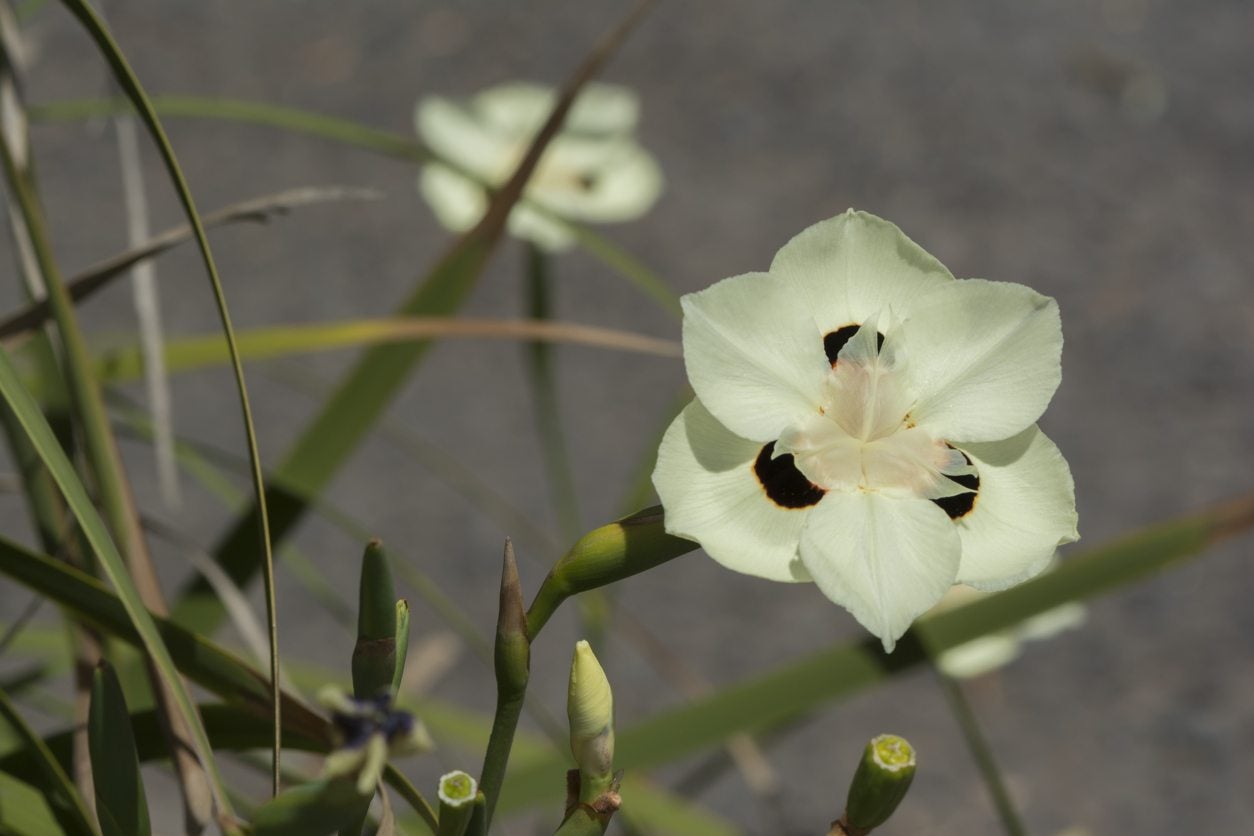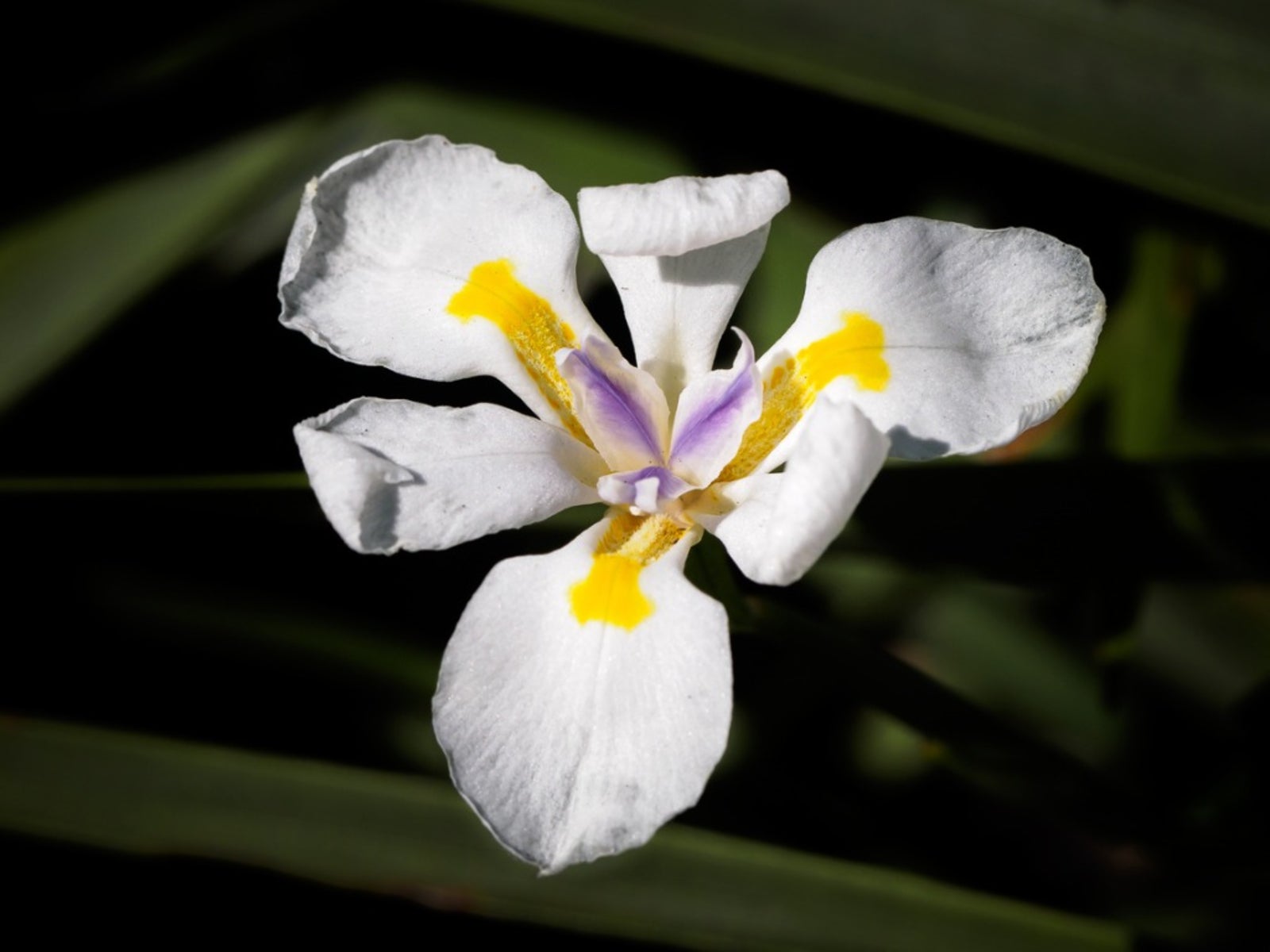How To Grow Dietes Evergreen Iris Plants


Sometimes called butterfly flag, peacock flower, African iris, or fortnight lily because it seems to send out new blooms every two weeks, Dietes bicolor is most frequently known as evergreen iris. Native to South Africa, Dietes iris is hardy in zones 8-11 and has naturalized in Florida, Texas, Louisiana, Arizona, New Mexico, and California. Continue reading to learn more about evergreen iris plants.
Evergreen Iris Plants
Dietes evergreen iris looks like a clump forming, flowering, ornamental grass and is frequently used in the landscape as one. However, it is actually a member of the iris family. Its blooms, which appear sporadically from May through September and sometimes throughout winter in the hottest zones, look similar to bearded iris flowers in shape and size. Evergreen iris blooms, though, are generally yellow, cream, or white in color and variegated with black, brown, or orange. These blooms attract many pollinators to the garden and are an excellent addition to butterfly gardens. They make excellent, dramatic accents for container gardens too. The sword-like foliage grows from rhizomes and can reach up to 4 feet (1 m.) high and are about an inch (2.5 cm.) thick. As the plant matures, this foliage begins to arch and weep, giving it the appearance of an ornamental grass. The foliage is truly evergreen, though it may brown in temperatures that are too cold.
How to Grow Dietes Evergreen Iris Plants
Evergreen iris plants grow well in a wide variety of soils – slightly acidic to slightly alkaline, clay, loam or sandy – but they cannot tolerate dry, chalky soil. They prefer rich, moist soil and can tolerate growing in shallow, standing water. This makes them excellent plants for use around water features. They are labeled as a full sun plant but prefer bright morning sun with some filtered afternoon sun. Growing an evergreen iris requires very little work or maintenance, as they only need to be lightly fertilized with a general purpose fertilizer once or twice a year. In consistent, ideal temperatures, evergreen iris can self-sow and may become a nuisance if not kept in check. Every 3-4 years it is a good idea to divide Dietes evergreen iris. Deadhead spent flowers as needed to control seed formation and keep the plant re-blooming. Flower stalks should be cut back to the ground after its short-lived blooms have faded. In northern, cooler climates, Dietes evergreen iris can be grown as an annual bulb like canna or dahlia.
Gardening tips, videos, info and more delivered right to your inbox!
Sign up for the Gardening Know How newsletter today and receive a free copy of our e-book "How to Grow Delicious Tomatoes".
-
 How To Make A Bouquet Garni Or Herb Bundle For Cooking
How To Make A Bouquet Garni Or Herb Bundle For CookingIf you’re a great cook, you may have made an herb bundle before. If this is a new idea, learn how to add sparkle and interest to your dish with a bouquet garni.
By Amy Grant
-
 ‘Coral Charm’ Peony Care For Sublime Semi-Double Peonies With Lush Salmon Pink Flowers
‘Coral Charm’ Peony Care For Sublime Semi-Double Peonies With Lush Salmon Pink FlowersPeonies are known for their soft baby pink or magenta tones, but if plushy coral blooms are your thing, here’s our guide to the ultimate ‘Coral Charm’ peony care
By Tonya Barnett
